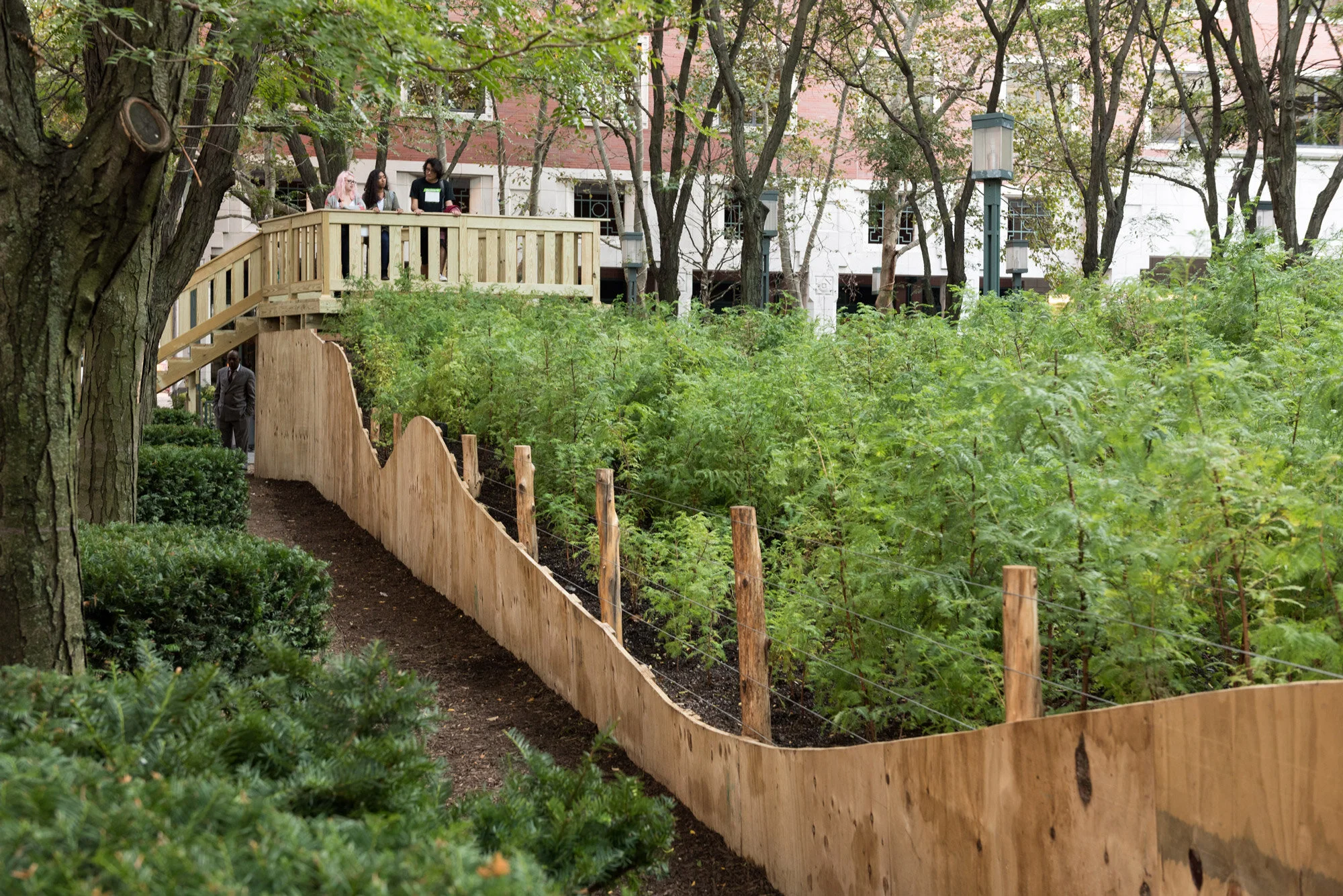SPENCER FINCH’S LOST MAN CREEK
A miniature man-made forest lands in the heart of downtown Brooklyn.
Art and Science are often seen as being diametrically opposed, one being viewed as subjective expression and the other as an attempt at cold objectivity, respectively. Spencer Finch’s Lost Man Creek, however, is a testament to how impactful art can be as an expression of scientific inquiry. Finch teamed up with Public Art Fund and Save the Redwoods League in order to create a miniature forest in the heart of downtown Brooklyn. The exhibit, which is located at the MetroTech Commons, contains roughly 4,000 Dawn Redwoods in a topographical environment that mimics a 790-acre portion of California’s Redwood National Forest, but at 1:100 scale. Even the trees, which reach up to 400 feet in the actual Redwood Forest, are only one to four feet tall at the exhibit. Visitors are encouraged to climb a platform built above the installation in order to see it from an aerial view, but you can also walk around the trees in order to gain a better perspective of the land on which the work is based.
Spencer Finch - Lost Man Creek, 2016. Photo: Timothy Schenck. Courtesy of Public Art Fund.
While Finch spent a lot of time researching the environment and geography of Redwood National Forest, the trees growing in Lost Man Creek are not actually the same redwoods found in California. Instead, Finch used dawn redwoods, which are the deciduous cousins of the coniferous Sequoia redwoods found on the west coast. This decision plays into the larger ecological message of the installation because the dawn redwood thrives better in New York’s climate. The dawn redwood was also believed to be extinct and had only been studied in fossilised form until the 1940s, when a forester came across a living specimen in Modaoxi, China. Throughout the latter half of the 20th century, researchers at Harvard University collected seeds from the tree in China in order to revive the species, and now dawn redwoods can be seen all around the New York City, growing in Central Park and even in many neighbourhoods in all five boroughs. While not explicitly stated anywhere at the exhibit, this fact is important because it allows for the objective message of Lost Man Creek — i.e. humanity’s connection to nature and the responsibility we all have to better our environment — to be interwoven with a more subjective and localized appreciation of the work as “New York” art.
Spencer Finch - Lost Man Creek, 2016. Photo: Timothy Schenck. Courtesy of Public Art Fund.
Spencer Finch - Lost Man Creek, 2016. Photo: Timothy Schenck. Courtesy of Public Art Fund.
This connection between objective events and subjective thoughts can be seen throughout Finch’s artwork, including his exhibit at the National September 11 Memorial and Museum, titled “Trying To Remember the Colour of the Sky on That September Morning”, in which he painted 2,983 squares of Fabriano paper (one for each person killed in the September 11 attacks) a different shade of blue in order to convey everyone’s individual perspectives of an event that affected the entire world. While Finch has not stated any specific meaning behind Lost Man Creek, the piece itself encourages viewers to consider natural phenomena in a way that does not occur often in urban environments, and the more one learns about the creation of the miniature forest, the stronger the connection between viewer and art becomes.
Lost Man Creek will be open to the public until March 11, 2018. Unfortunately, the redwoods have lost all their leaves for the winter. But the beauty of this piece lies in its ability to transcend the confines of the installation and continue growing elsewhere in the future. Public Art Fund has curated an event-closing ceremony on March 11 between 12:00 and 2:00 pm, where anyone can attend and adopt one of the 4,000 trees. The trees will be potted, and anyone who chooses to adopt one will be given instructions for care. Any leftover trees will be donated to NYC Parks, The Trust for Governors Island, Prospect Park Alliance, Kids Escaping Drugs, and more organisations in New York.
Words by Nick Nicewonder




